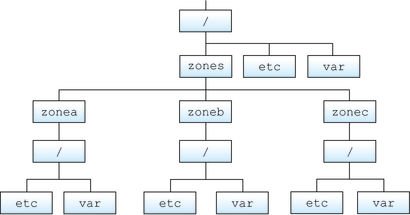| Skip Navigation Links | |
| Exit Print View | |

|
Oracle Solaris 11.1 Administration: Oracle Solaris Zones, Oracle Solaris 10 Zones, and Resource Management Oracle Solaris 11.1 Information Library |
| Skip Navigation Links | |
| Exit Print View | |

|
Oracle Solaris 11.1 Administration: Oracle Solaris Zones, Oracle Solaris 10 Zones, and Resource Management Oracle Solaris 11.1 Information Library |
Part I Oracle Solaris Resource Management
1. Introduction to Resource Management
2. Projects and Tasks (Overview)
3. Administering Projects and Tasks
4. Extended Accounting (Overview)
5. Administering Extended Accounting (Tasks)
6. Resource Controls (Overview)
7. Administering Resource Controls (Tasks)
8. Fair Share Scheduler (Overview)
9. Administering the Fair Share Scheduler (Tasks)
10. Physical Memory Control Using the Resource Capping Daemon (Overview)
11. Administering the Resource Capping Daemon (Tasks)
13. Creating and Administering Resource Pools (Tasks)
14. Resource Management Configuration Example
15. Introduction to Oracle Solaris Zones
16. Non-Global Zone Configuration (Overview)
17. Planning and Configuring Non-Global Zones (Tasks)
Planning and Configuring a Non-Global Zone (Task Map)
Evaluating the Current System Setup
Determine the Zone Host Name and the Network Requirements
Shared-IP Zone Network Address
Exclusive-IP Zone Network Address
Creating, Revising, and Deleting Non-Global Zone Configurations (Task Map)
Configuring, Verifying, and Committing a Zone
Script to Configure Multiple Zones
How to Display the Configuration of a Non-Global Zone
Using the zonecfg Command to Modify a Zone Configuration
How to Modify a Resource Type in a Zone Configuration
How to Clear a Property in a Zone Configuration
How to Add a Dedicated Device to a Zone
How to Set zone.cpu-shares in the Global Zone
Using the zonecfg Command to Revert or Remove a Zone Configuration
How to Revert a Zone Configuration
How to Delete a Zone Configuration
18. About Installing, Shutting Down, Halting, Uninstalling, and Cloning Non-Global Zones (Overview)
19. Installing, Booting, Shutting Down, Halting, Uninstalling, and Cloning Non-Global Zones (Tasks)
20. Non-Global Zone Login (Overview)
21. Logging In to Non-Global Zones (Tasks)
22. About Zone Migrations and the zonep2vchk Tool
23. Migrating Oracle Solaris Systems and Migrating Non-Global Zones (Tasks)
24. About Automatic Installation and Packages on an Oracle Solaris 11.1 System With Zones Installed
25. Oracle Solaris Zones Administration (Overview)
26. Administering Oracle Solaris Zones (Tasks)
27. Configuring and Administering Immutable Zones
28. Troubleshooting Miscellaneous Oracle Solaris Zones Problems
Part III Oracle Solaris 10 Zones
29. Introduction to Oracle Solaris 10 Zones
30. Assessing an Oracle Solaris 10 System and Creating an Archive
31. (Optional) Migrating an Oracle Solaris 10 native Non-Global Zone Into an Oracle Solaris 10 Zone
32. Configuring the solaris10 Branded Zone
33. Installing the solaris10 Branded Zone
You can specify a number of mounts to be performed when the virtual platform is set up. File systems that are loopback-mounted into a zone by using the loopback virtual file system (LOFS) file system should be mounted with the nodevices option. For information on the nodevices option, see File Systems and Non-Global Zones.
LOFS lets you create a new virtual file system so that you can access files by using an alternative path name. In a non-global zone, a loopback mount makes the file system hierarchy look as though it is duplicated under the zone's root. In the zone, all files will be accessible with a path name that starts from the zone's root. LOFS mounting preserves the file system name space.
Figure 17-1 Loopback-Mounted File Systems

See the lofs(7S) man page for more information.